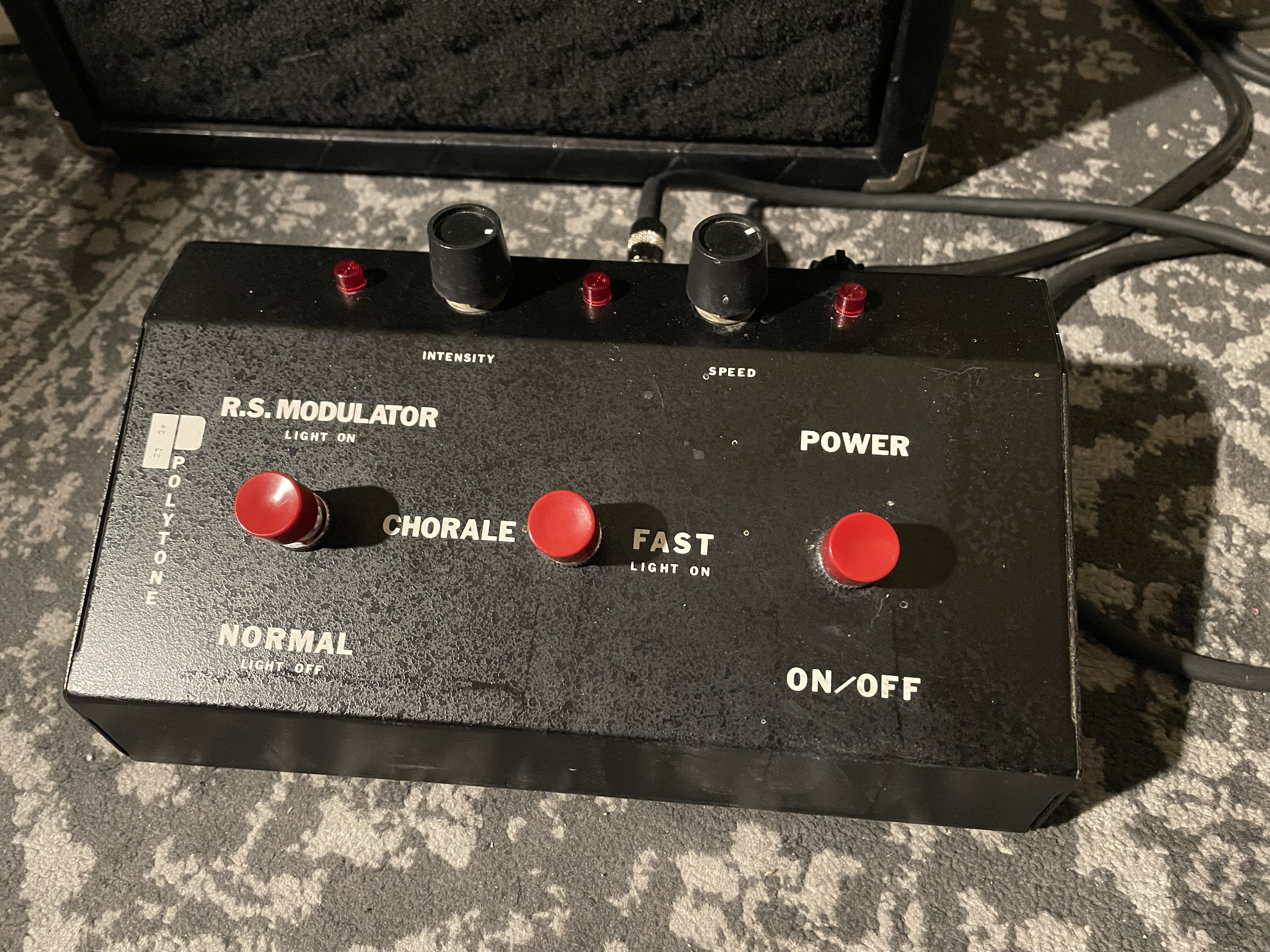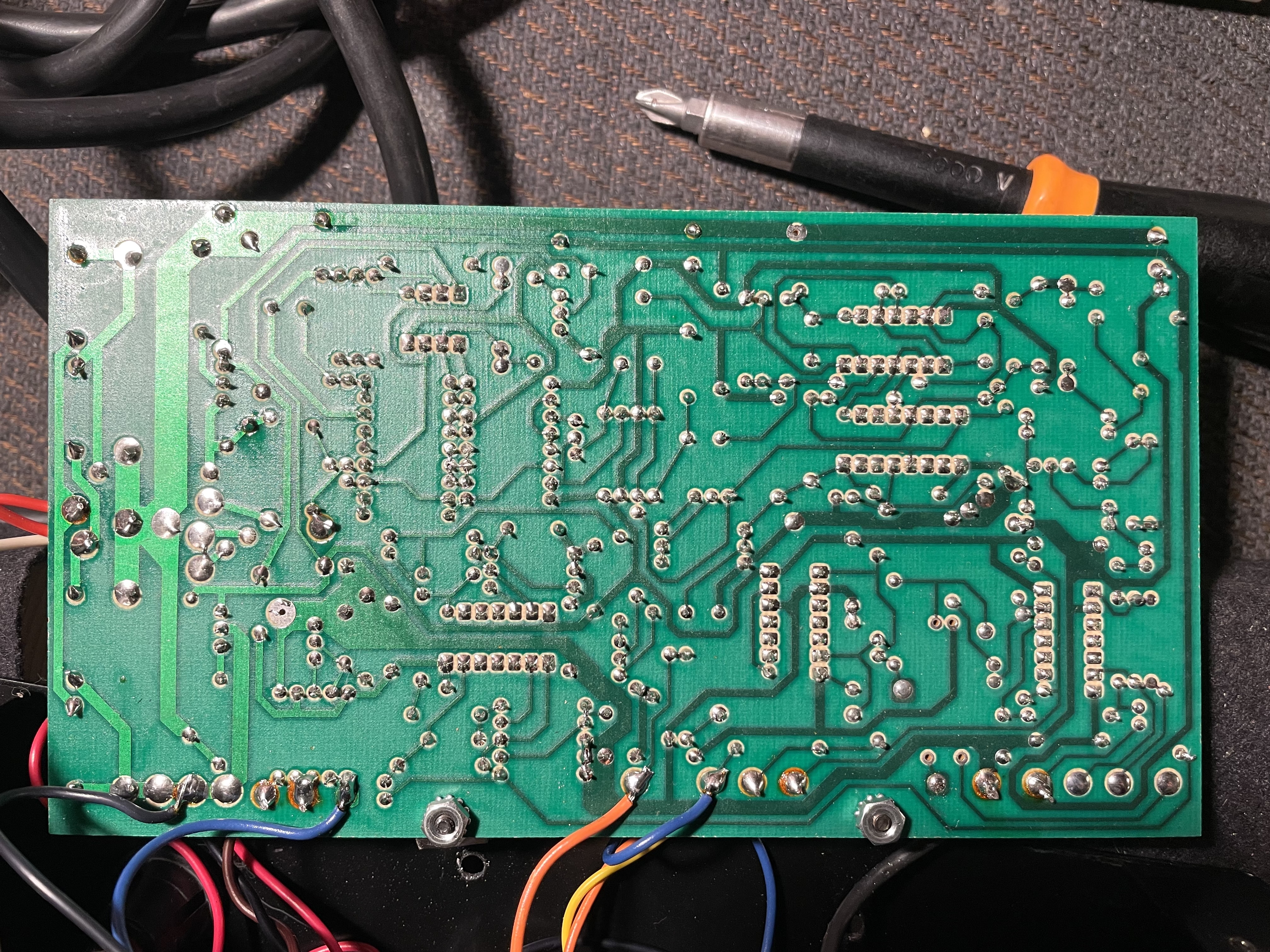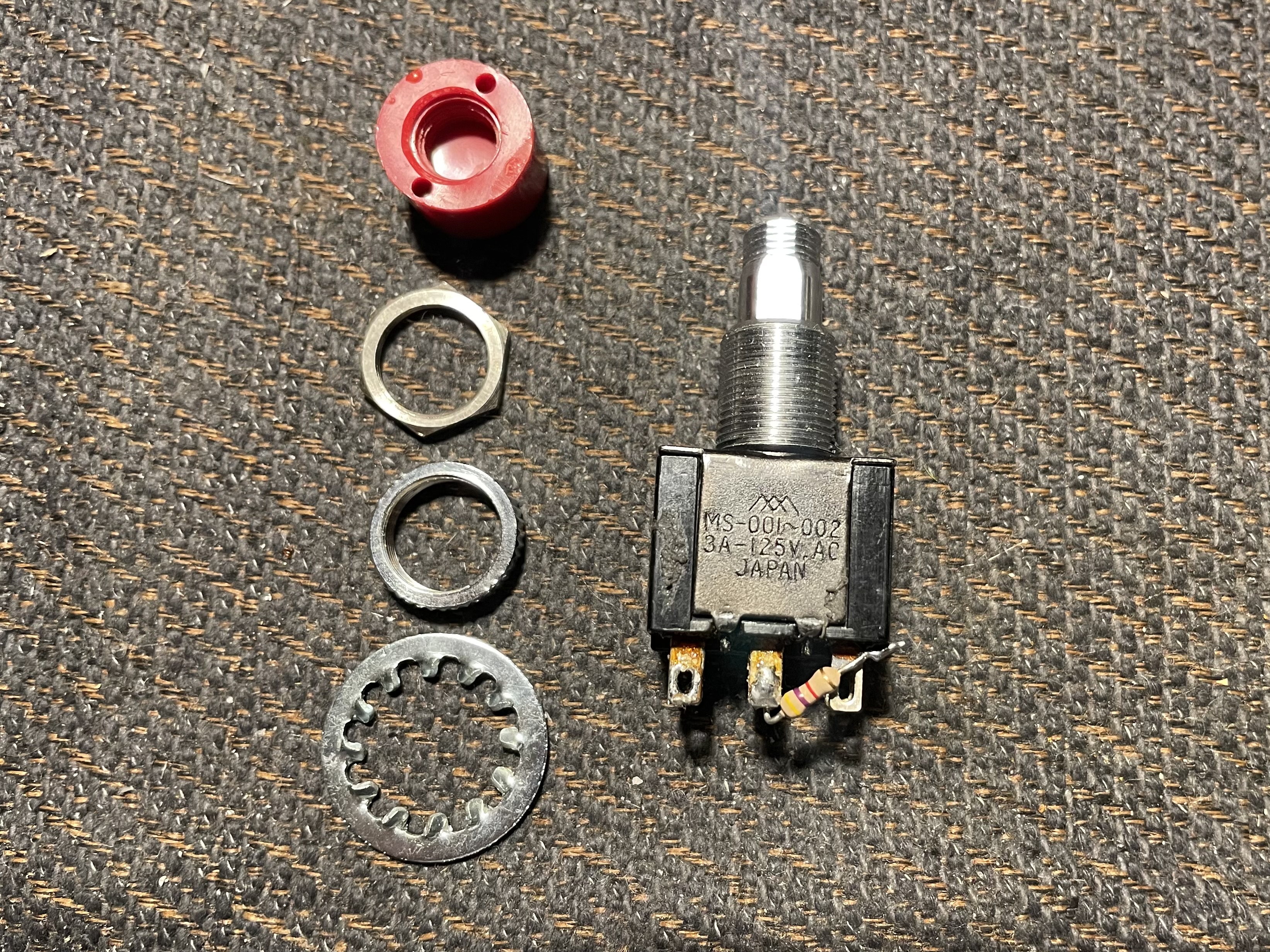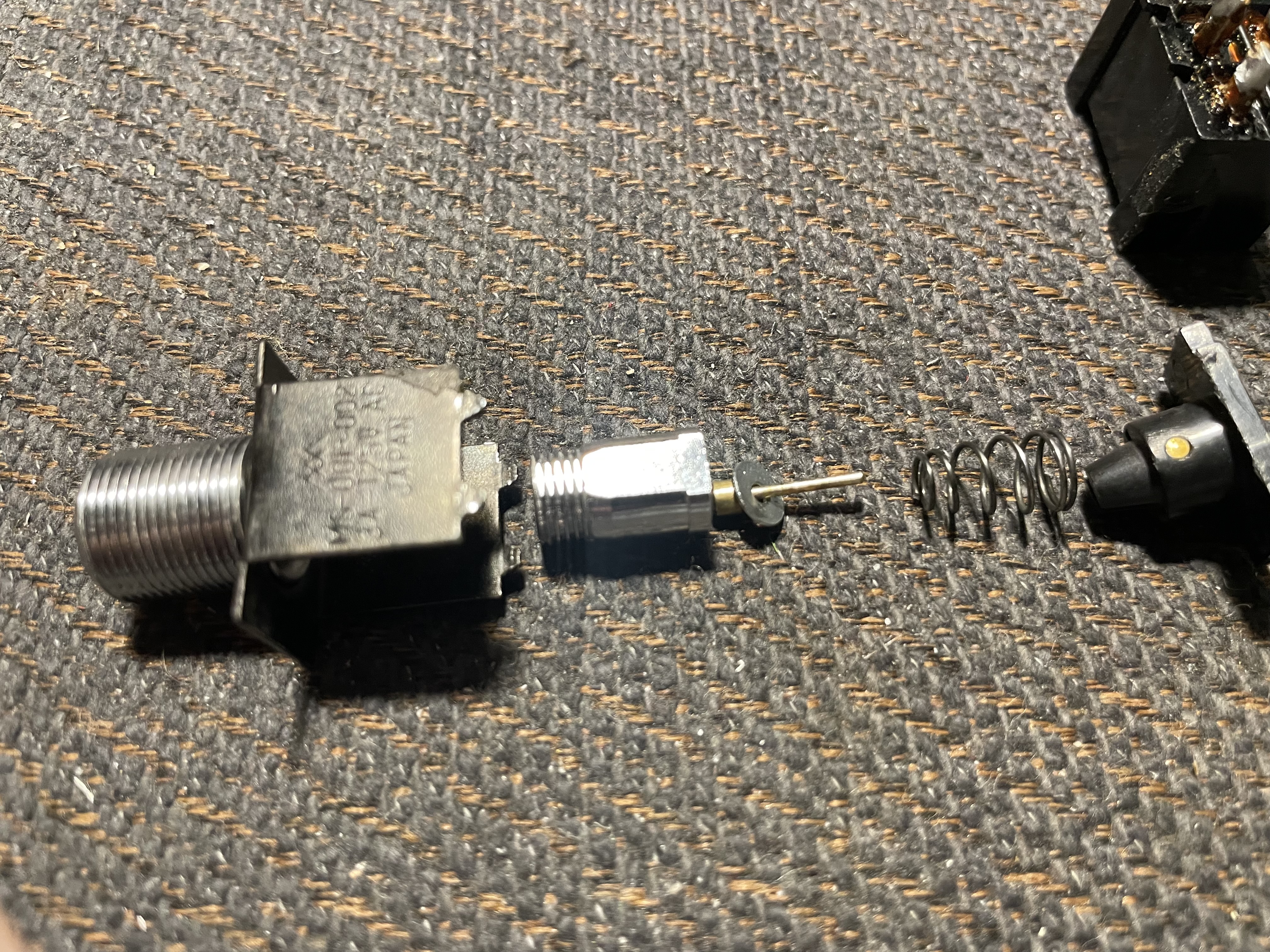The Polytone RS Modulator
Last updated 3/20/2025
By Paul Marossy
In creating my
Polytone Field Guide
page, I discovered that some of Polytone's amps had a
feature called "RS Modulator". I wasn't quite sure what that was until I saw the standalone RS Modulator unit. When I heard how it
sounds I just had to get one for myself! In my searching I found that the RS Modulator appeared in Polytone's catalog in 1989.
My unit was made in 1987, and date codes I found on some components inside are 1985 & 1986.
As always, I am curious about circuits and what they consist of, and so I in vain tried to find a schematic specific to this RS Modulator but found
nothing. Of course this started for me another journey of discovery against the odds. There is so little info on the internet about this unit
that I found it annoying, thus the reason why I created this webpage. After some detective work I discovered that the RS Modulator circuit is
actually shown on the Taurus Elite schematic, so thus began my usual process of reverse engineering so I could derive a schematic. First I had to
start with an as-built of the PCB. Once I got that ironed out I could tackle generating the schematic which is linked below. I had to do some
asking around at a forum where some very knowledgeable people frequent and they solved the mystery of what the "PT2201" IC chip is shown on the
Taurus Elite schematic - it's a TDA1022! (Thanks Mark Hammer!) There was no way of knowing by looking at the unit itself as the markings were
deliberately removed by sanding them off, but thanks to the schematic there were enough clues to figure out what IC chip it used. The TDA1022 is a
dual 512-stage BBD chip. It has a rather unique pinout, and it's different from the SAD1024 which might seem like the obvious guess for an
unidentified 16-pin BBD chip.
Now I know what you may be thinking. The RS Modulator is NOT just a copy of something else but if I had to compare it with something, I'd
say it sounds similar to the Boss CE-1 chorus or maybe even the Shin EI Univibe. It just has less knobs. The two knobs that it does have
are Intensity and Speed. The Intensity control is interesting. On the Fast setting, it can go from a subtle chorus to a very lively Leslie rotating
speaker sound, and at full clockwise a fun and wiggly sounding vibrato (verified via oscilloscope). All have pretty obvious functions. The slow setting
is way way slower than the fast setting. The chorus effect is much less perceptible but it's still a pleasant sound that has an interesting quality to it.
With the Intensity at 100% and the Speed control at about 75% of max I'd say it sounds like a very slow one-stage phaser with very minimal phasing.
I think this pedal could be modified with a trimpot to adjust the minimum speed of the Slow setting to make it just a little bit faster. Another modification
that could be done is to add an expression jack for one or both of the controls. I do like how on my Model 104 Maxi-Brute amp that I can control the Harmonic
Divider speed with an expression pedal. Would be a cool feature to add if you're not shy about modding a "vintage" pedal. There's a wide range of sounds to
be found in this pedal and an expression pedal could really bring that out if this were a major part of your sound.
Two mysteries remain: One is the fuse rating and the other is the power cord grounding. In all the pictures I could find of the RS Modulator, not
one of them has any stickers or markings regarding the fuse type. Mine came with a 2 amp fuse, which I am told is probably about right but I'd like to
know what Polytone used. I tried to find an owner's manual for this thing, but you guessed it, nothing to be found. On my unit, the power cord is a
heavy duty 3-wire grounded type like on my Model 104 Maxi-Brute but the ground was not connected to anything. The green ground wire was snipped off, and
it appears to have come from the factory that way. It was a royal pain in the rear but I re-worked the existing power cord on mine and made it so that
the ground wire was grounded to the enclosure. This reduced some noise issues somewhat when the effect was switched off. It's not really noisy by the
standards of the day but it also depends on what other things are connected to the AC outlet.
Overall I really love how this guy sounds with my Mini Brute rescue. It's a fun one! Below are some details of my RS Modulator.
 |
Here is the view from the user's perspective. Knobs are Intensity and Speed. The three switches it has are Normal/R.S. Modulator, Speed Fast/Slow and Power On/Off. On the back are Inst. and Amp jacks along with the fuse holder. The jacks are not insulated from the steel enclosure. |
 |
Here we can see the component side of the PCB. At lower right you can clearly see the markings have been sanded off of the TDA1022 chip. The layout is neat and efficient. Not the hand designed type as found in my Model 104 Maxi-Brute from the late 1970s. |
 |
If we lift up the PCB we can see the three DPDT switches inside. Weatherstripping was used to provide some insulation between the switches and the back of the PCB. Might seem kinda cheesy but it actually works. Polytone seems to have loved using that stuff as it's also in the chassis of my Model 104 maxi-Brute and my Mini Brute too. |
 |
Here is the back of the PCB. Nothing unusual going on here. It's just a single layer board with the green coating used at the time. |
 |
The pots in my unit are the same PCB mounted type that are in my Model 104 Maxi-Brute. They folded over the stablizer tab so it's out of the way. The pots were made by CTS in 1986. |
 |
Here's the power transformer. It's not very large. I don't know what the exact specs are on it or who manufactured it. It mounts to the side of the enclosure with two screws that insert into the threaded tabs on the transformer. |
 |
The only markings on the power transformer are "15-0122" and "KS28q". |
 |
The DPDT switches on this unit were made in Japan by Mountain Switch I believe. They are the weak point on this unit. They can be a bit dodgy and one of mine tried to literally dismantle itself but I successfully took it apart and repaired it. One of the other switches was two faced - in one mode it switched with very little effort and then to switch modes you REALLY had to stomp on it or it wouldn't reliably switch otherwise. I like the red plastic caps so I wanted to keep them if I could, and actually a few drops of carefully applied oil with repeated cycling of the switch got it working reliably again. Many of the units I've seen don't have this type of switch. It appears to me that they might be Carling switches, which were used in some of their amplifier switching units. |
 |
An exploded view of one of the switches that came in my unit. Here you can see the parts that need lubrication. It is possible to drop a small amount of oil into the push-rod plunger and return spring area without it leaking down into the actual switch area where the contacts are. So in that respect I like that feature of these switches. On the other hand, it's virtually impossible to get any contact cleaner inside of the switch due to its design (and it shouldn't need any anyway due to being essentially a sealed unit). |
 |
Inside the circular & cone-shaped area is a little brass pivoting rocker, held in place with a pin, which is actuated by the brass push-rod in the previous picture. The little spring has a cup on one end which receives the finger on the pivoting rocker and on the other end of the spring is a part with a semi-circlular cut out which fits into the barbell-shaped assembly with rolling contacts. It's a little tricky to put back together but it can be done with a little bit of care and patience. The tricky part was re-crimping the metal part onto the plastic housing. A vise and careful use of a small punch is all that was required. |
 |
Here is what the TDA1022 chips may have looked like before the markings were removed. Could also have had the Phillips logo on them. Your guess is as good as mine. |
So there is everything you ever wanted to know about the Polytone RS Modulator. If you have any info to add, please email me using the
link on my home page. I would be most interested in an actual factory schematic, or an owner's manual if such a thing ever existed. Also
any ads, brochures or catalogs that feature the RS Modulator would be interesting.